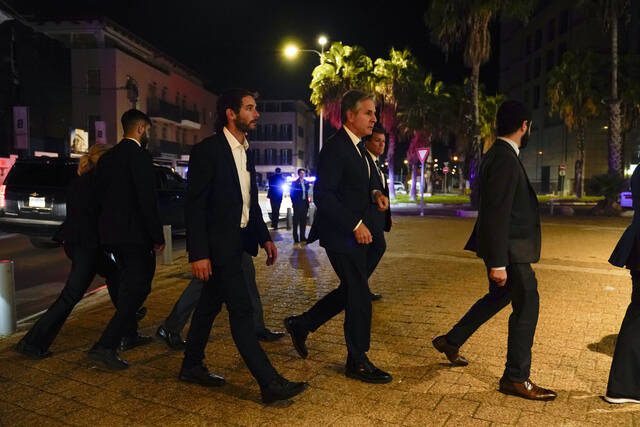WASHINGTON — Jacquelyn Martin works as a photojournalist for The Associated Press in Washington. She takes photos of politics at the White House and Congress and has traveled all over the world as a pool photographer covering every secretary of state since Hillary Clinton. She is also known for creating feature packages where she takes photos, writes, and records videos. She was the last press photographer to take a photo of Nelson Mandela before he passed away.
Working for the AP in Washington, I cover a lot of important politics. I’m used to working in crowds, trying to be assertive while also using finesse to ensure access. Being too aggressive or too soft can both cause problems. When I started in 2006, there were few female photojournalists in Washington. While there were trailblazing colleagues like AP’s Susan Walsh, and more women have joined us since then, there were many years when I was the only female in the photo crowds. It taught me a lot about finding the right approach, which was helpful last October.
On Oct. 11, 2023, I got on a U.S. Air Force plane to fly with Secretary of State Antony Blinken on his last-minute trip to Israel and the Middle East to try to stop all-out war from spreading after the Oct. 7 attack by Hamas. I was assigned as the photo pooler and tasked with providing pictures to U.S. news outlets and the global wires of these urgent diplomatic efforts.
With one day’s notice and no idea of how long we might be away, I packed lightly and prepared what captions I could, knowing everything could change suddenly. Even though I’ve covered the State Department many times as the photo pooler, under different administrations, I knew this story was urgent and that gave me a renewed sense of purpose.
The Middle East can be a difficult place to take photos even in the best circumstances. Access can be hard, the press and officials can be intense, and you must be assertive. It’s also uncommon to see female photojournalists there. Sometimes people not knowing what to make of you works in your favor. Add in volatile international politics, a brewing war, and high tensions, and it made it even more challenging. The assignment took on a greater sense of urgency, knowing that people’s lives would be affected by the meetings I was covering. The adrenaline made it hard to sleep, but that was a good thing because it turned out we wouldn’t be sleeping much. I knew my colleagues in the region were out in the field and in danger. Still, I had to do my best to document this one part of the larger story.
I could sense the chaos right away, and so saw an opportunity to capture more behind-the-scenes moments than usual. Being prepared and using the chaos to your advantage can lead to more storytelling moments. These photo sessions are usually well-planned, but this time there was so much uncertainty that I was able to quickly figure out where to position myself, do my job, and come away with more varied scenes than usual. It helped that I’ve worked with the State Department team before; in fact, I was with them as the pooler for a trip to the Middle East just months before. You must show that you can do the work and won't get in the way. It helps to show them that if they work with you and trust your instincts, images of their guy will circulate worldwide.
I have to travel light when I go on trips for the State Department. I carry all the equipment on my body, even on the planes. There’s no time to pack and unpack a camera bag. Traveling compactly is useful when you have to push through a group of Qatari official photographers or quickly take advantage of photo opportunities because you had to sprint up from the back of a very long motorcade.
I’m not a photographer who covers war and conflict. I mainly cover politics. There was one night when we were being held outside in the middle of Israel’s Ministry of Defense in Tel Aviv where alarms went off. Rockets were incoming and the press pool had to seek shelter underground. I felt the booms from the Iron Dome detonation. I hadn’t experienced that before, and it shook me. As a mother, I will admit to sending messages to my son to say I loved him, just in case. It seems somewhat silly looking back, as we were in a safe place and so many people in the region were suffering much worse at that same moment. But it was scary and really highlighted the seriousness of what had happened and how the situation could spiral.



